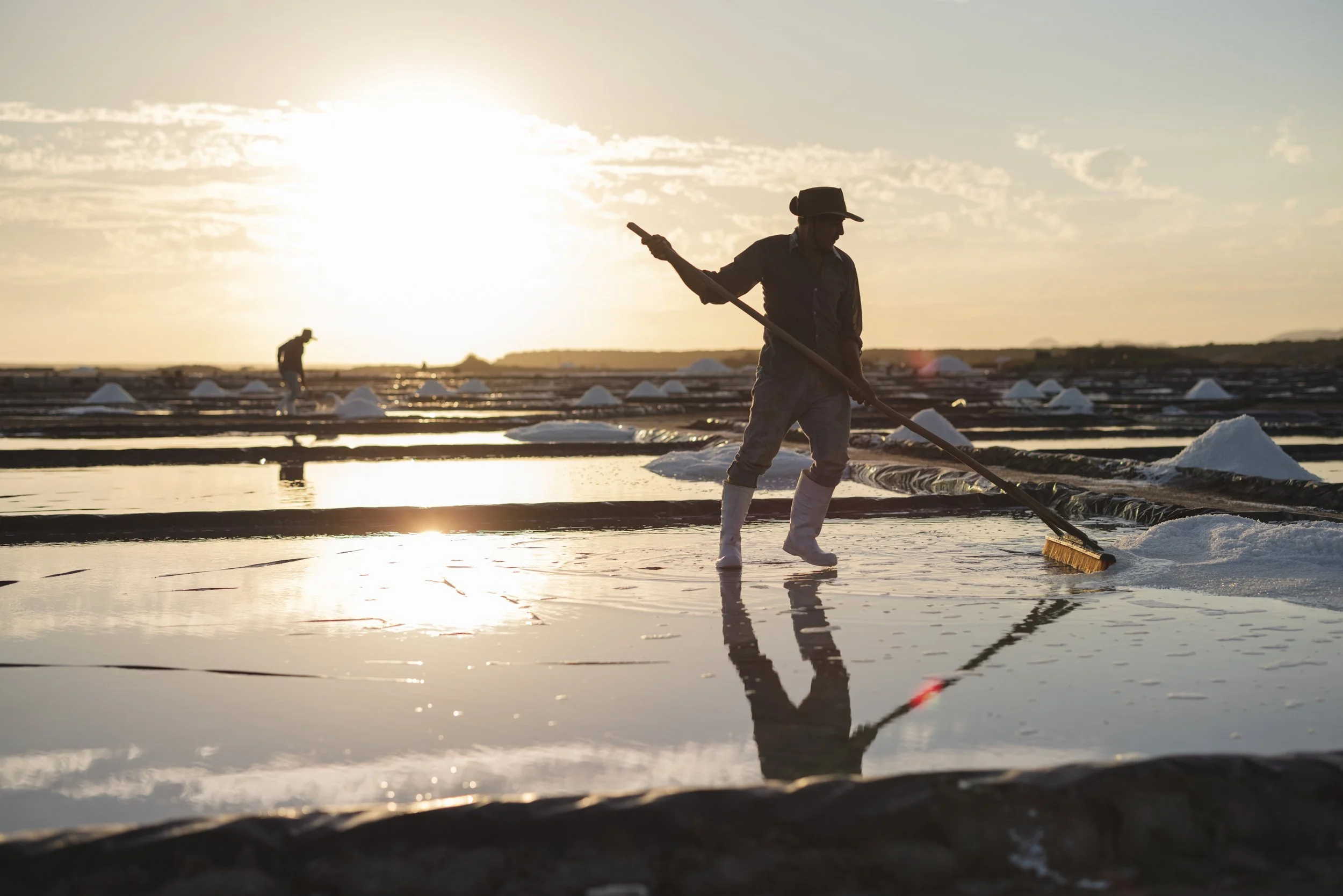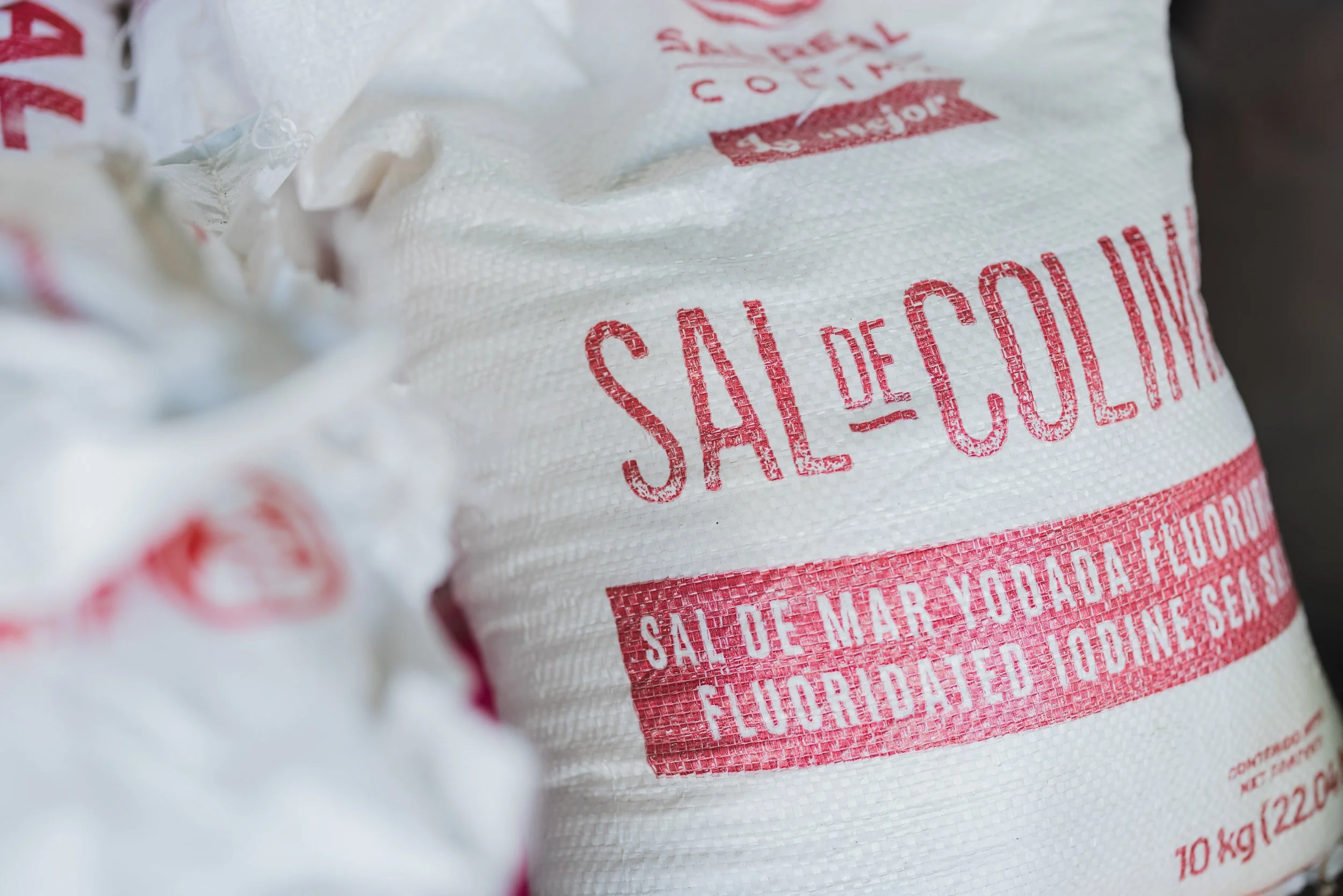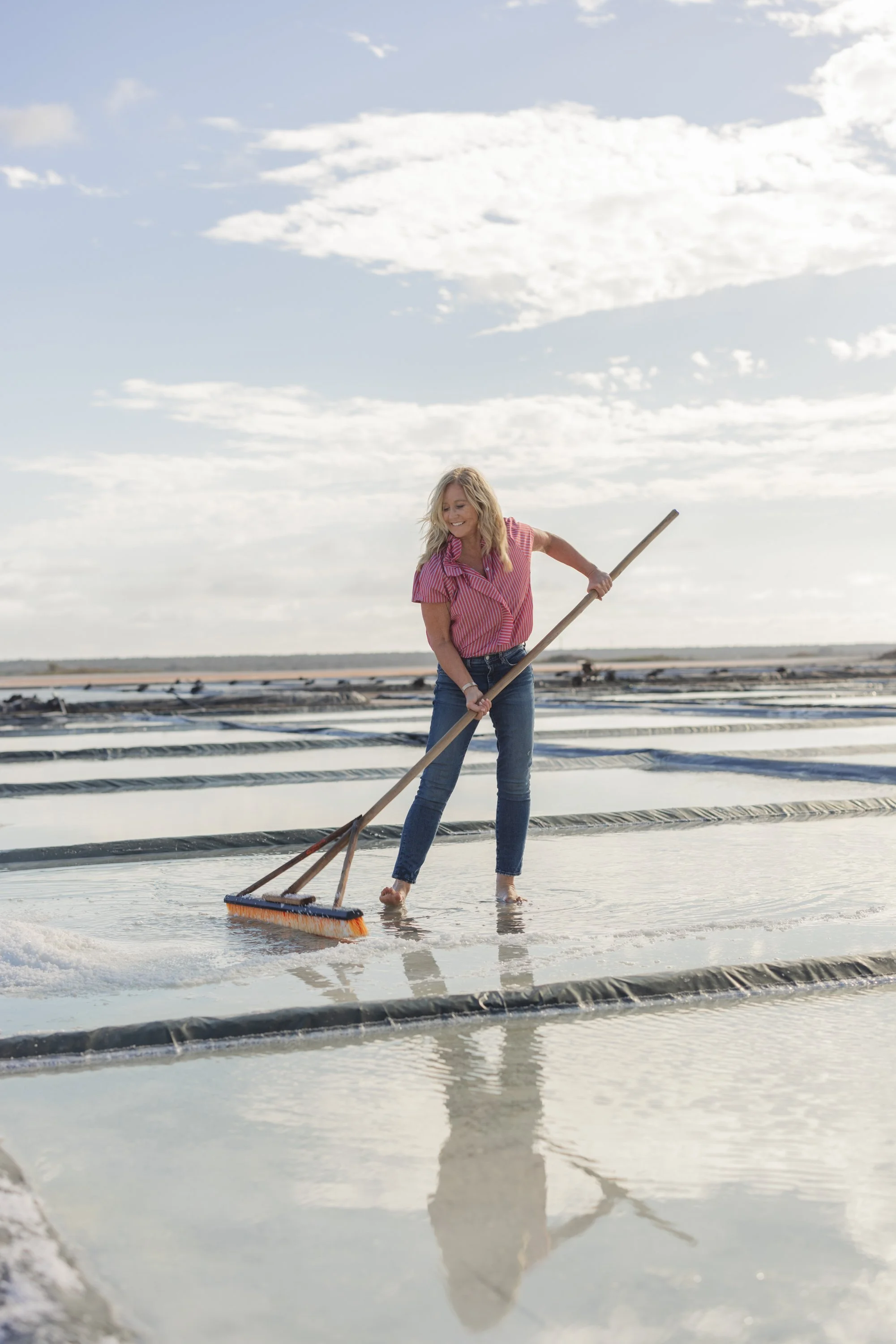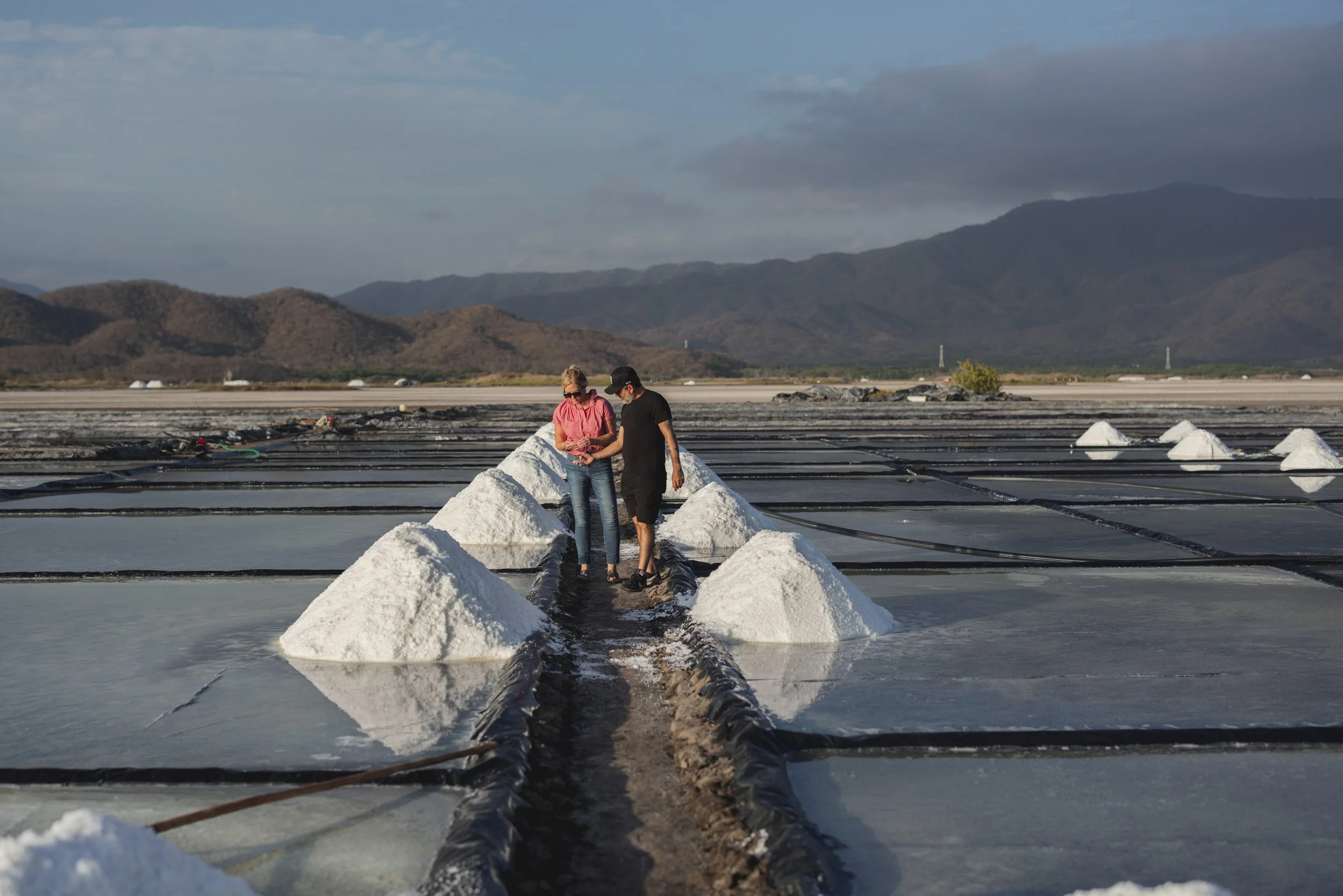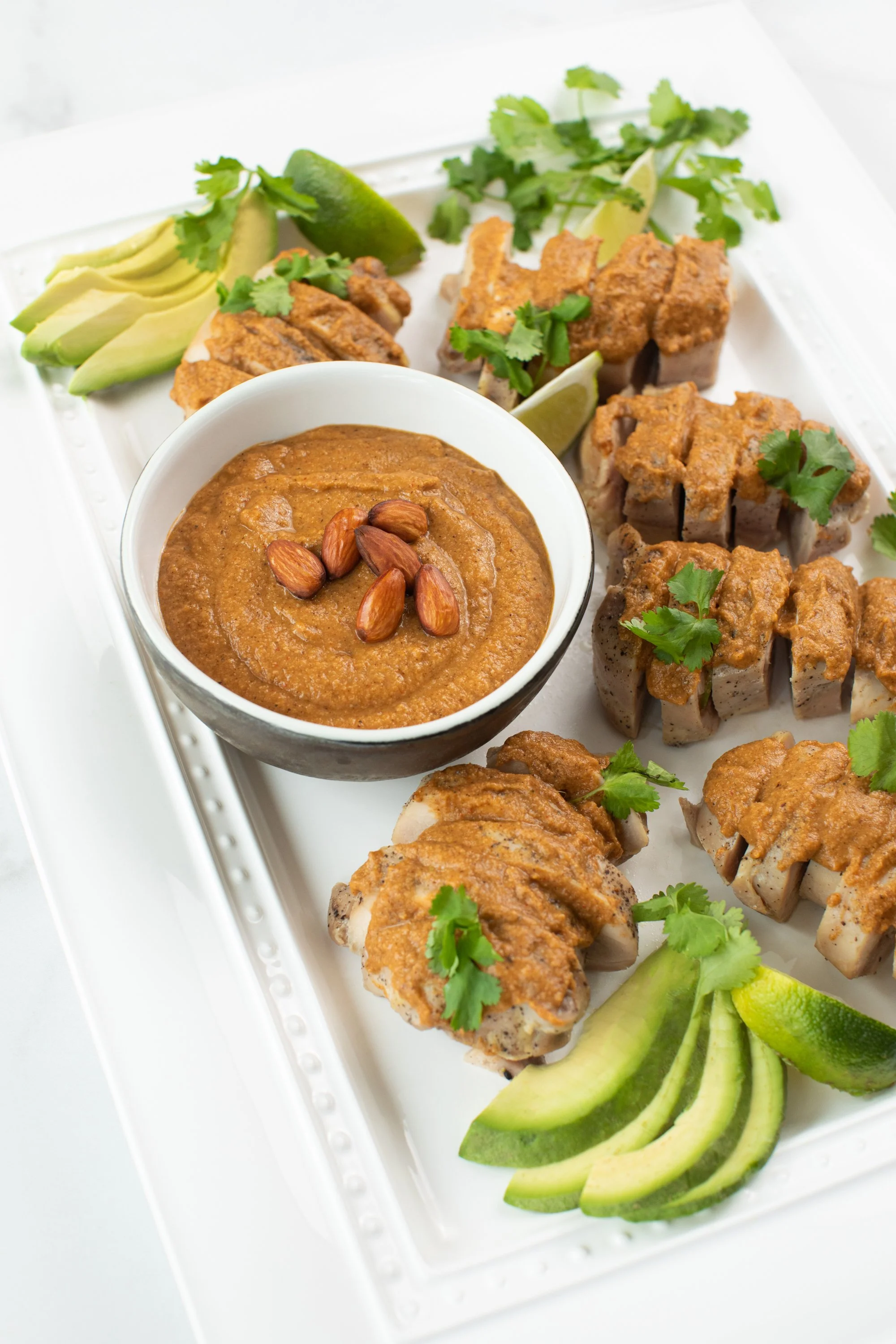Seasoned in Colima, Mexico
It’s no secret that I have a fascination with salt. I collect it, cook with it, read about it, and even travel to distant lands to seek out delectable new varieties. Salt has been an important part of history since the beginning of time, used to preserve food, season food, and supplement diets. It has even been used as currency. The English word “salary” comes from the Latin word “salarium”, which translates to “salt money.” Wars have been fought over salt and people have died trying to discover it.
Fortunately, salt is now easy to come by, and is relatively inexpensive. Yet, I gained a greater appreciation for the precious seasoning when I spent an afternoon at a salt farm in the small state of Colima, which lies on the west coast of Mexico. I marveled as I watched the laborious task of harvesting the white crystals into perfect stacks (some as high as a two-story building). And, because I had just returned from Sicily where I toured the salt pans in Trapani, I noted the similarities and differences to their methods of harvesting.
In Trapani, salt water is collected directly from the sea into one large pool, then moved into smaller pools with the help of windmill power; while in Colima, saltwater is pumped from underground pools near a lagoon by the sea. Colima salt is said to contain 20 different minerals and have the least amount of microplastics than any other sea salt.
Months before arriving in Colima I had contacted Chef Nico Mejía, a native who has written four books featuring the mountains, volcanos, vegetation, and salt in his home state. He manages five restaurants and is probably the biggest advocate for the families that operate the salt farms in Colima. Nico told me I should come in April when the spring rains have ended; it’s the ideal time for harvesting salt. There is only a two- or three-month period when the salt can be collected since the rainwater causes the sea to cover the pools.
My photographer, Valerie and I set out to meet Chef Nico at his restaurant, appropriately named Les Sal. It sits off the main road, with the kitchen and outdoor patio just next to his mother’s house where he grew up. Tropical plants and trees shade the patio, and the wall behind the bar is studded with 1,500 coconut shells.
The restaurant was busy with families and couples sipping margaritas and passing bowls of salsa. Occasionally, Nico’s dog came by to clean the floor below us. I told Nico to bring us whatever he wanted to serve, and after platters of ceviche, tacos, and tostadas, we finally put an end to our incredible meal. Ceviche in Colima is different from other parts of Latin American because the fish is finely minced with carrots, chiles, and onions before soaking in a small amount of lime juice. It’s served drier than the traditional juicy ceviche I was accustomed to, and it was the perfect bite atop a crispy tostada.
The next day Nico took us to the Manzanilla city market where we feasted on hand-made corn tortillas, tacos, and posole blanco, a specialty of the region. The dried corn is cooked in a clear broth with chicken or pork and no chile sauce. It’s served dry with shredded meat and cabbage on top. It was a much better way to taste the flavor of the corn without the overpowering taste of chile sauce. Before leaving the market, we walked through the maze of tropical fruits, fresh fish, and mounds of leafy vegetables grown near the volcano nearby. Nico had to return to his restaurant for lunch service, but we agreed to meet again before sunset to visit the salt farm.
It was an hour drive to the town of Cuyutlán, a settlement rich with the history of salt mining. One fabulous find is their museum, which has miniature wooden models showing the ancient process of harvesting salt, dating back to pre-Hispanic times. The salt farms cover many acres, but Nico knew the perfect place to get the best experience. We drove along miles of muddy roads to the lagoon where we spotted piles of salt, sparkling in the sunlight.
Saltwater is pumped from underground and put into “pans” or pools lined with black plastic sheeting. After a couple weeks the water evaporates, and impurities are skimmed from the top, leaving a thick layer of pure white salt crystals. To collect it, one must use a salt broom to move the salt into piles, which are shoveled into barrels and dumped into huge hills of salt. It is a very laborious job, and due to the daytime heat, workers show up in the mornings and evenings to collect and move the salt. During our visit, families arrived to harvest together, some having worked there for their entire lives. We walked around for nearly three hours, trying our hand at sweeping salt and climbing the salt hills as we waited for sunset.
Nico kept telling us it would be worth the wait to see how the sun reflects on the pools, and oh my goodness was he right! Once the sun began to set, there was a transformation unlike anything I had ever seen. The clouds above turned bright pink and the reflection on the water was extraordinary. The colors got deeper every minute and Valerie snapped photographs as quickly as she could. We were both completely entranced with what we saw. Once it got dark, we made our way back to Manzanilla, stopping to purchase bags of salt for me to take home. I filled a suitcase with 50 kilos of salt that made it home safely, ready to use in my cooking and to gift and sell to friends.
Even with salt in our hair and all over our skin, we stopped for dinner at a taqueria in Manzanilla where we enjoyed another local specialty, tatemado de Colima, shredded pork that had braised in chiles and coconut vinegar, commonly used in the coconut-growing region. It was served on warm tortillas with crumbled local cheese and pickled onions. Just when we thought we’d had enough, a plate of sugar-coated empanadas stuffed with pumpkin and honey appeared before us. Neither of us remembered ordering them, but one bite with a sip of Colima coffee was enough to make us close our eyes, feeling both fatigued and completely energized. We agreed it could not have been a better day.
For years, I’ve purchased salt from all over the world. Most people don’t understand why I do it, but it’s just something I love. After watching the process in Trapani and Colima, I have a whole new appreciation for salt and the impact it has had in our world. I’m thankful to Chef Nico for taking the time to show me around his hometown and for sharing his personal love for the food and salt of Colima.
I hope you are fortunate enough to also experience the state of Colima. This quiet, often misunderstood part of Mexico has so much to explore - active volcanoes, some of the best fruits and vegetables in all of Mexico, the sea, the mountains, the jungle, and of course, the magnificent salt farms. Colima is a hidden gem and you can bet your weight in salt, it will be an adventure you will never forget.


